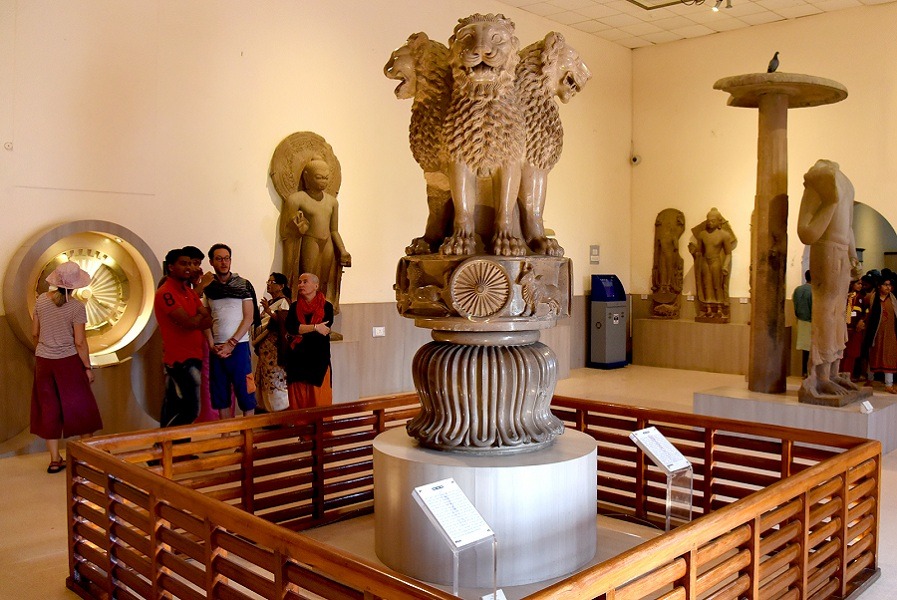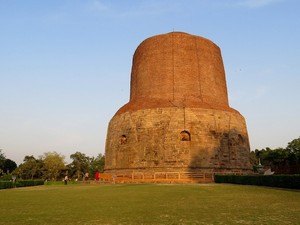Archaeological Museum / Sarnath Museum, Sarnath - Timings, Entry Fee, History & Artifacts
 #3 of 12 Places to Visit in Sarnath
#3 of 12 Places to Visit in Sarnath
 Distance (From Sarnath Railway Station): 1.5 Kms
Distance (From Sarnath Railway Station): 1.5 Kms
 Trip Duration (Including Travel): 30 Mins - 1 Hr
Trip Duration (Including Travel): 30 Mins - 1 Hr
 Place Location: Beside Archaeological Remains Complex
Place Location: Beside Archaeological Remains Complex
 Transportation Options: Walk/Trek
Transportation Options: Walk/Trek
 Travel Tips: There is also a combined entry ticket (costs Rs. 25 for Indians and Rs. 100 for Foreigners) that provides combined entry to the Archaeological Ruins complex, Dhamek Stupa, and Archeological Museum.
Travel Tips: There is also a combined entry ticket (costs Rs. 25 for Indians and Rs. 100 for Foreigners) that provides combined entry to the Archaeological Ruins complex, Dhamek Stupa, and Archeological Museum.
At a distance of 500 m from Dhamek Stupa, 1.5 km from Sarnath Railway Station, and 9 km from Varanasi Junction, Archaeological Museum is a museum located in Sarnath. Just beside the Archaeological Remains Complex, it is one of the popular museums in Varanasi, and among the top places to visit in Sarnath.
Popularly called as Sarnath Museum, the Archaeological Museum in Sarnath was established in the year 1910 CE by Sir John Marshall, the then Director-General of Archaeology in India. It was constructed just adjacent to the excavated site at Sarnath to keep the antiquities found from the site. The museum building was started in 1904 and was completed in 1910. It is the oldest site museum of the Archaeological Survey of India. As the findings are mostly from Buddhist monasteries or vihar, the plan of the building was designed by James Ransome on the pattern of a Sangharam or a vihar. The whole building is made of sandstone with a flat roof.
The museum contains five galleries and two verandahs to display the antiquities ranging from the 3rd century BCE to 12th century AD that have been found at Sarnath. The museum has around 6,832 sculptures, artifacts, and edifices comprising numerous Buddha and Bodhisattva images and other ancient remains. The single most famous exhibit of this museum is the Lion Capital of Ashoka, which was originally erected around 250 BCE atop an Ashoka Pillar at Sarnath. The angle from which this picture has been taken, minus the inverted bell-shaped lotus flower, has been adopted as the National Emblem of India showing the Horse on the left and the Bull on the right of the Ashoka Chakra in the circular base on which the four Indian lions are standing back to back. On the far side, there is an Elephant and a Lion instead. The wheel 'Ashoka Chakra' from its base has been placed onto the center of the National Flag of India.
Besides, the Sarnath museum also houses a collection of other Buddhist artifacts. Among the things to see is a sculpture of the Buddha from the 5th century. Of other Buddhist remains, there is a life-size standing Bodhisattva and a delicate image of the Bodhisattva with a lotus and yet another bronze sculpture showing the Bodhisattva with multiple arms. The museum at Sarnath also houses a collection of figures and sculptures from the Mauryan, the Kushana, and the Gupta periods. Prominent among them is the earliest Buddha image found at Sarnath and many images of Hindu Gods dating from the 9th to 12th centuries.
Timings: 9 AM - 5 PM, Closed on Friday
Museum Entry: Rs. 5 for Person



















